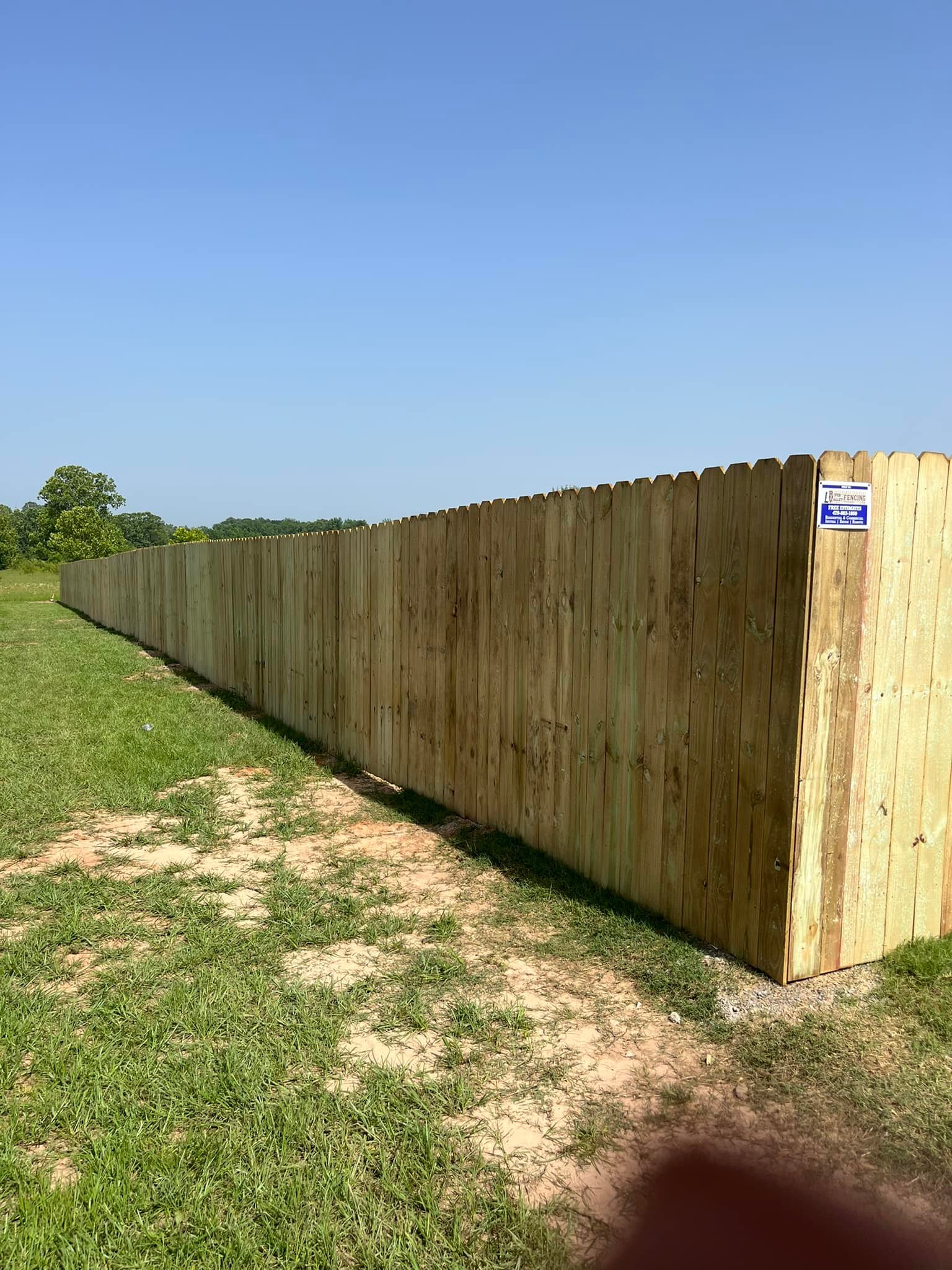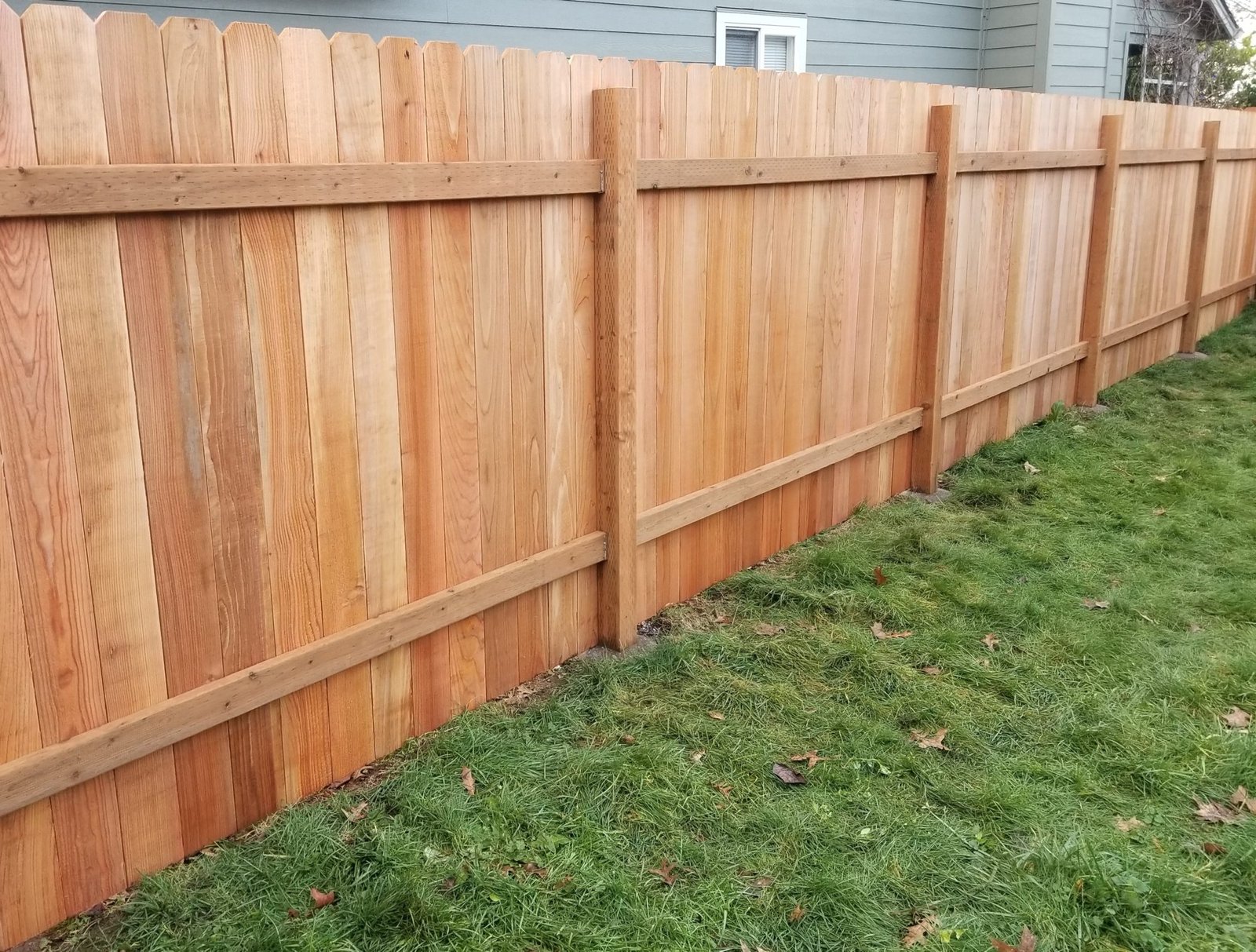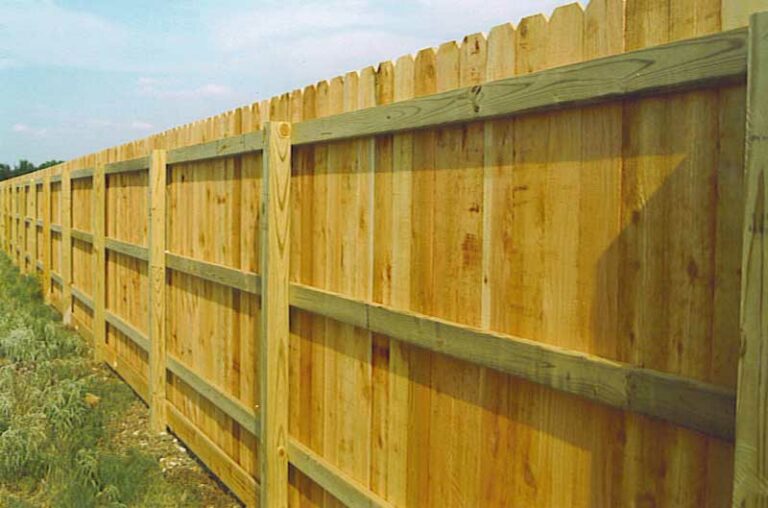Experienced Wood Fence Contractors Fort Smith AR: Creating Stylish and Functional Fences
Experienced Wood Fence Contractors Fort Smith AR: Creating Stylish and Functional Fences
Blog Article
Step-by-Step Overview to Installing a Wood Fence for Your Home or Building
Setting up a wood fencing can significantly improve both the functionality and visual appeal of your property. Understanding these steps not just guarantees a tough setup yet additionally contributes to lasting fulfillment.
Preparation Your Fence Setup
When starting the installment of a wood fencing, mindful preparation is vital to ensure an effective outcome. Begin by evaluating the purpose of the fence-- whether it is for personal privacy, safety and security, or visual appeals-- considering that this will certainly influence the layout and format. Next off, review the home lines, making sure to validate the boundaries through a study or title deed to avoid disputes with next-door neighbors.
Think about neighborhood zoning home owners and legislations' association standards, as these might dictate fencing height, style, and materials. It is a good idea to get the essential authorizations prior to starting job, as this can prevent lawful problems later on.
In addition, think about the terrain and dirt problems of your home. Unequal ground might need additional adjustments during setup, while rough dirt could require customized devices.
Lastly, develop a detailed plan that includes dimensions, the number of messages, and the spacing between them. A clear format will promote the setup procedure and make sure that you have all required materials accessible. By sticking to these planning actions, you can establish a solid structure for an effective timber fencing installation.
Choosing the Right Products
Picking the ideal materials for your wood fence is crucial to guaranteeing toughness and visual charm. The most usual sorts of wood utilized for fence include cedar, redwood, and pressure-treated ache. Cedar and redwood are naturally resistant to degeneration and insects, making them exceptional selections for durability. Their abundant shades and natural grain patterns additionally boost the aesthetic appeal of your property.
Pressure-treated pine is one more prominent option, as it is usually more budget-friendly. It needs routine upkeep and treatment to extend its lifespan. When picking wood, think about the climate of your region; as an example, locations with high humidity might gain from wood species with better resistance to dampness.
In addition, you must examine the fencing style and objective. A picket fence may need different product specifications compared to a privacy fence. Choose thicker boards for architectural stability, particularly in high-wind locations. Take into consideration the coating; untreated wood may need discoloration or securing to shield against weather elements. By thoroughly selecting your materials, you can guarantee that your wood fence will certainly stand the test of time while matching your home's landscape.
Preparing the Installation Site

Preparing the installation website is an important action in making sure the successful building and construction of your wood fencing. Correct prep work not just helps with a smoother setup process but likewise adds to the longevity and stability of the fencing.

If your site has uneven ground, take into consideration leveling it or changing your fencing design as necessary. This is important to stop damages throughout setup and make sure security.
Installing the Fencing Posts

Following, dig holes for every message, guaranteeing they are deep sufficient-- usually one-third the elevation of the post over ground-- to give stability. A depth of a minimum of 2 feet is recommended for the majority of fencings. The size of the holes need to be approximately 3 times the size of the articles.
Once your openings are prepared, area each post upright right into the designated opening. Use a degree to guarantee they are plumb, readjusting as needed. After placing, fill up the holes with concrete mix or jam-packed dirt for included assistance. Enable the concrete to heal as per the manufacturer's directions, normally 24 to two days. Properly installed posts are vital for preserving the architectural integrity of the fence, guaranteeing it remains secure and upright versus environmental anxieties.

Adding Fencing Panels and Finishing Touches
When the fencing articles are firmly established, the next step entails attaching the fencing panels, which will specify the limits of your building. Begin by positioning each panel in between the messages, ensuring they are level and straightened. Use a level tool to inspect that the panels are straight; this will certainly make certain a professional finish. For optimal security, safe each panel to the posts making use of galvanized screws or nails, which resist corrosion and corrosion.
Nevertheless panels are attached, check my reference evaluate the entire fence for any type of misalignments or spaces. Make adjustments as essential to make certain a consistent appearance. When pleased with the placement, take into consideration adding ending up touches. Sand any type of rough edges or surface areas to avoid splinters and enhance looks.
Additionally, using a safety sealant or discolor will certainly enhance the wood's longevity versus climate elements, prolonging the life of your fencing. Choose a color that complements your home and landscape for an aesthetically pleasing appearance. Lastly, examine neighborhood laws for any kind of called for upkeep or updates to make sure compliance with community standards. With these actions, your wood fencing will not only offer its function efficiently but additionally improve the overall charm of your building.
Conclusion
In verdict, the successful installment of a timber fence calls for cautious preparation, selection of ideal materials, complete site preparation, and precise implementation of setup strategies. Appropriate maintenance post-installation better extends the life and look of the timber fencing.
When embarking on the installment of a wood fencing, careful planning is crucial to make sure an effective outcome.Choosing the appropriate materials for your timber fence is essential to guaranteeing resilience and aesthetic appeal. A picket fencing might need different product specifications contrasted to a privacy fence.With the installation site properly prepared, the next action involves setting the fencing messages, which serve as the foundation of your timber fencing.Once the fencing posts are firmly set, the following step includes connecting the fencing panels, which will define the dig this limits of your home.
Report this page